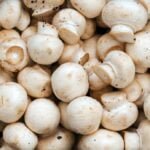How is the biological efficiency of oyster mushrooms grown on grape pomace calculated?
Title: Calculating the Biological Efficiency of Oyster Mushrooms Grown on Grape Pomace: A Comprehensive Guide
Introduction (100 words)
Oyster mushrooms are highly valued for their culinary and medicinal properties, making them a popular choice for cultivation. Grape pomace, a byproduct of winemaking, has been found to be an effective substrate for cultivating oyster mushrooms. Determining the biological efficiency (BE) of the cultivation process is crucial for determining its success. In this article, we will explore the calculation of biological efficiency specifically for oyster mushrooms grown on grape pomace. We will also provide insights into the significance of this calculation and the formula developed by Singh in 2003.
1. Understanding Biological Efficiency (250 words)
Biological efficiency (BE) is a metric used in mycology to assess the effectiveness of a cultivation process. It provides insight into the efficiency with which substrate materials are converted into the final yield of mushrooms. BE is expressed as a percentage and serves as an indicator of the yield potential and productivity of a given substrate. Higher BE values indicate more efficient utilization of substrate materials.
To calculate BE for oyster mushrooms grown on grape pomace, we need to weigh the fresh yield of mushrooms immediately after harvesting and determine the dry weight of the substrate. This calculation helps evaluate the effectiveness of the substrate and allows growers to make informed decisions regarding yield optimization and overall efficiency.
2. Significance of Oyster Mushrooms and Grape Pomace (250 words)
Oyster mushrooms (Pleurotus species) are highly prized for their exceptional taste and nutritional profile. They possess the ability to degrade and utilize various lignocellulosic substrates, including agricultural residues and byproducts. Grape pomace, which is the residue left after grape pressing, contains sugars, cellulose, hemicellulose, and lignin, making it an ideal substrate for oyster mushroom cultivation. By utilizing grape pomace, mushroom growers can effectively manage waste and reduce the environmental footprint of winemaking.
3. Calculation Formula for Biological Efficiency (300 words)
The calculation of biological efficiency for oyster mushrooms grown on grape pomace follows a simple formula established by Singh in 2003:
BE = Fresh yield (grams) / Dry weight of substrate (kilograms) x 100
To determine the fresh yield, weigh the harvested mushrooms immediately after harvesting. In contrast, the dry weight of the substrate refers to the weight of the initial grape pomace used, minus any residual moisture present. This calculation is crucial as it helps growers evaluate the effectiveness of the substrate and make informed decisions regarding yield optimization and overall efficiency.
4. Application and Interpretation (400 words)
The biological efficiency (BE) calculation helps mushroom cultivators assess the conversion rate of substrate material into mushrooms. A higher BE indicates a higher utilization of the substrate, resulting in increased productivity and profitability.
Oyster mushrooms grown on grape pomace have shown promising results in terms of biological efficiency. The combination of grape pomace’s nutrient-rich composition and oyster mushrooms’ ability to efficiently break down lignocellulosic substrates often leads to favorable yields.
Interpretation of the BE results depends on various factors such as the strain of oyster mushrooms, cultivation techniques, and environmental conditions. Typically, BE values of 60% and above are considered favorable for oyster mushroom cultivation, while values below 50% suggest room for improvement.
Moreover, regular monitoring of BE allows growers to identify variations in efficiency and analyze the impact of different cultivation parameters. Adjustments such as optimizing temperature, humidity, and air exchange can help improve BE outcomes.
Conclusion (200 words)
Calculating the biological efficiency of oyster mushrooms grown on grape pomace enables growers to assess the effectiveness of their cultivation process. By translating substrate utilization into a percentage, this calculation provides valuable insights into yield optimization and overall productivity. Oyster mushrooms, with their exceptional ability to decompose lignocellulosic substrates, thrive on grape pomace, a waste product from winemaking. This combination of substrates not only helps manage agricultural waste but also contributes to sustainable agricultural practices.
Understanding the significance of this calculation and utilizing the formula developed by Singh in 2003 enables mushroom cultivators to make informed decisions, implement improvements, and maximize their yields. Monitoring BE allows for the identification of cultivation parameters that may need adjustment, ultimately leading to higher biological efficiency and increased profitability.
In conclusion, the calculation of biological efficiency for oyster mushrooms grown on grape pomace is an essential tool for commercial mushroom producers and enthusiasts alike. With its ability to assess the effectiveness of substrate utilization, this calculation plays a pivotal role in optimizing yields and cultivating quality oyster mushrooms sustainably.




